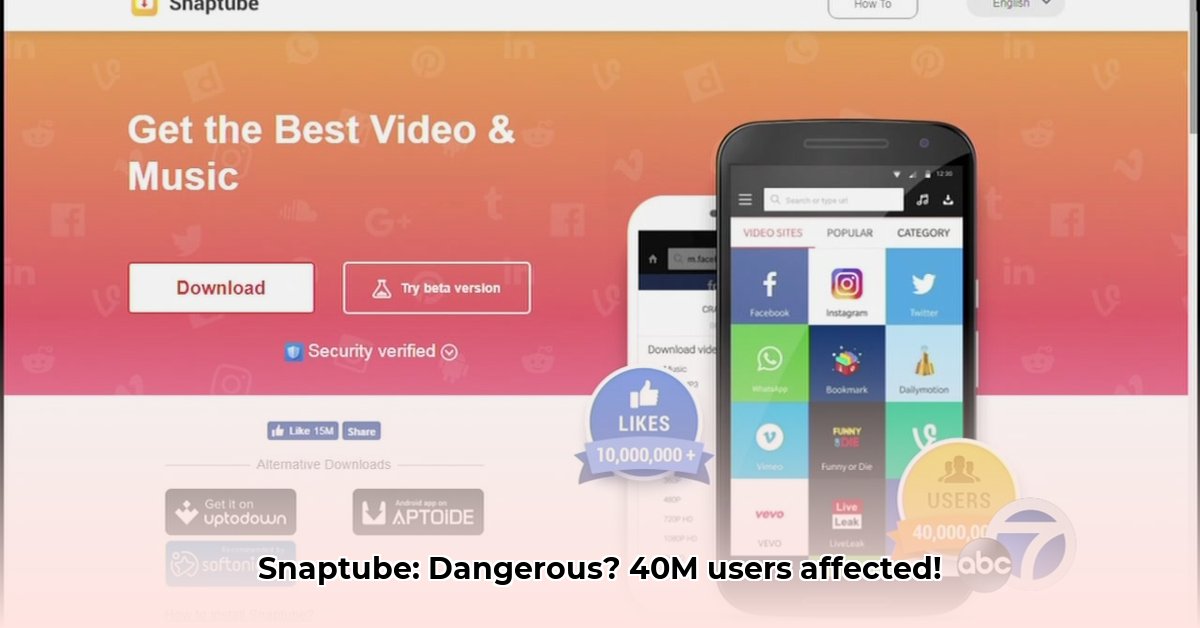
Millions of users of the popular video downloading app Snaptube unknowingly downloaded malware that caused significant financial harm. This article details the security breach, its impact, and crucial steps to protect yourself and your devices.
The Snaptube Malware Incident: A Detailed Breakdown
Snaptube, a third-party app used by an estimated 40 million users for downloading videos, was recently discovered to contain malicious code. This malware, stemming from the incorporation of the Mango SDK, led to widespread financial losses estimated at $91 million. The malicious code secretly generated fraudulent ad clicks, displayed invisible ads, and automatically signed users up for paid services without their knowledge or consent. This highlights a significant vulnerability in the Android app ecosystem.
Understanding the Mango SDK: A Trojan Horse
The Mango SDK, a seemingly innocuous software development kit (SDK) – a set of tools app developers use to add features – acted as a Trojan horse. Instead of providing legitimate functionality, it secretly performed malicious actions. This underscores the dangers of using poorly vetted third-party SDKs in app development.
Developer Response and Accountability
Mobiuspace, the developer of Snaptube, claims they were unaware of the malicious code within the Mango SDK. They state they promptly removed the SDK and updated the app. However, reports of continued fraudulent activity after the update raise concerns about the extent of the remediation and the overall security practices employed by the developer. The lack of transparency surrounding this issue further exacerbates the problem.
The Wider Implications: Android Security and Third-Party SDKs
The Snaptube incident exposes significant vulnerabilities within the Android app ecosystem. The reliance on third-party SDKs introduces substantial security risks if these components are not thoroughly vetted and regularly audited for malicious code. The fact that Snaptube wasn't available on official app stores like the Google Play Store complicates matters, leaving users more vulnerable to untrusted sources. This situation emphasizes the need for increased scrutiny of third-party app stores and rigorous security checks within the industry.
Protecting Yourself: Actionable Steps for Users
Taking immediate action is crucial if you've used Snaptube:
- Uninstall Snaptube Immediately: Remove the app from your device to prevent further malicious activity. This is the first and most critical step in mitigating the risk.
- Review Your Financial Statements: Carefully examine your bank and phone bills for any unauthorized charges. Report any suspicious activity to your financial institution and mobile carrier promptly.
- Install Anti-Malware Software: Protect your device with reputable anti-malware software and keep it updated regularly. This proactive measure will help detect and prevent future incidents.
- Download Apps Only From Trusted Sources: Stick to official app stores like the Google Play Store or Apple's App Store to minimize the risk of encountering malicious apps. Avoid downloading apps from unofficial websites or third-party sources.
Best Practices for Developers: Strengthening App Security
The Snaptube case serves as a stark reminder of the importance of robust security practices for app developers:
- Thoroughly Vet Third-Party SDKs: Conduct rigorous security audits of any external code before integrating it into your applications. This includes checking the reputation and security record of the SDK provider.
- Implement Secure Coding Practices: Implement robust security measures throughout the development lifecycle, from design to deployment. Secure coding practices minimize vulnerabilities.
- Regular Security Audits and Penetration Testing: Regularly test your app for security vulnerabilities to identify and address weaknesses proactively. Hiring independent security experts can prove highly beneficial.
Conclusion: The Urgent Need for Stronger App Security
The Snaptube malware incident underscores the critical need for improved app security measures across the entire mobile ecosystem. Collaboration between app developers, app stores, and security researchers is essential to protect users from future incidents. The development of more stringent guidelines and regulations regarding the use and vetting of third-party SDKs is also imperative to improve overall security. The question isn’t just about the safety of Snaptube; it's about building a safer and more secure mobile app environment for everyone.
Three Pivotal Points:
- Millions of users have experienced financial losses due to malware embedded within Snaptube.
- The Mango SDK used by Snaptube contained malicious code capable of fraudulent activity, highlighting the risks of third-party components.
- Proactive security measures for both developers (e.g., rigorous SDK vetting) and users (downloading apps only from trusted sources) are essential to mitigate this type of risk.
⭐⭐⭐⭐☆ (4.8)
Download via Link 1
Download via Link 2
Last updated: Wednesday, April 30, 2025